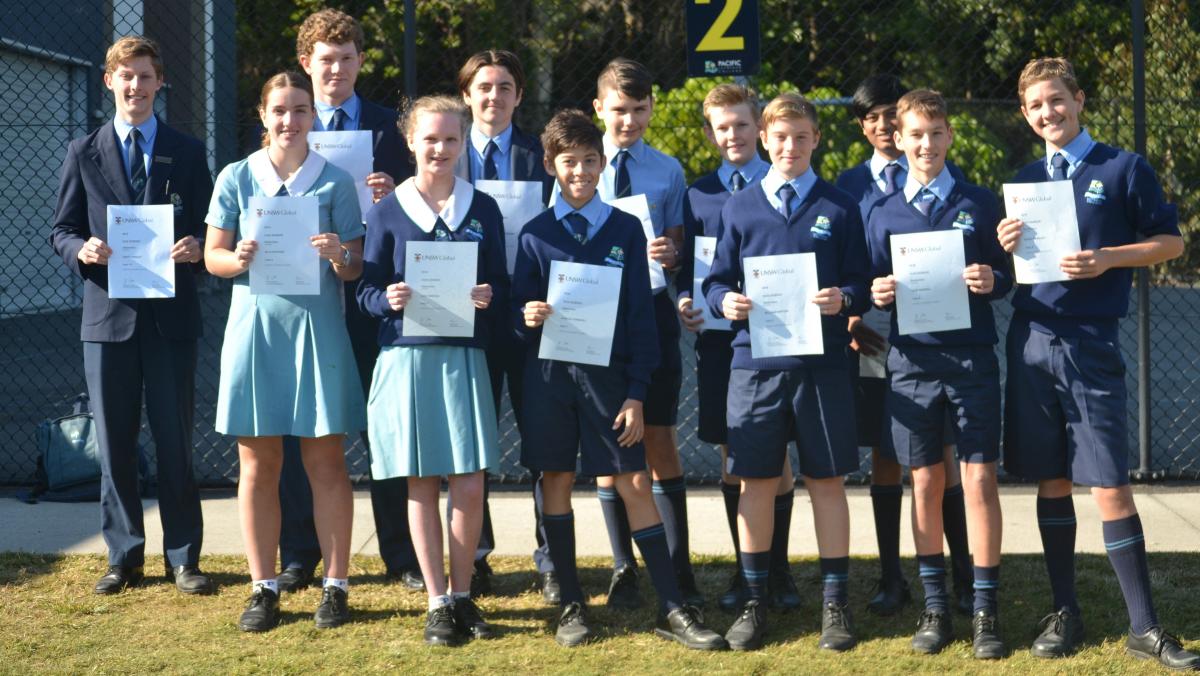International Competition and Assessments for Schools
International Competition and Assessments for Schools
 The International Competition and Assessments for Schools (ICAS) Science Competition assesses students’ skills in the key scientific areas of: Interpreting data, including observing, measuring and interpreting diagrams and information, tables and graphs; Applying data, including inferring, predicting and concluding; And higher order skills, including investigating, reasoning and problem solving.
The International Competition and Assessments for Schools (ICAS) Science Competition assesses students’ skills in the key scientific areas of: Interpreting data, including observing, measuring and interpreting diagrams and information, tables and graphs; Applying data, including inferring, predicting and concluding; And higher order skills, including investigating, reasoning and problem solving.
Each year students who are enrolled in a Science subject at Pacific, in Years 3-12 sit this competition.
In order for a student to be awarded a certificate of High Distinction, they need to be ranked in the top 1% of their year level in the whole of Australia. This year we have two students who have achieved this outstanding ranking. They are: From Year 7 – Ben McCormac and from Year 8, Noah Winten.
To achieve a certificate of Distinction, students are ranked in the top 11% of their year level in Australia. This year we have 11 students in the middle and senior school who have achieved this outstanding ranking.
Year 7: Lucy Dimond, Joshua Turnbull, Callum Foley (top 4%);
Year 8: Liam Russell, Varsh Surapaneni (top 3%);
Year 9: Noah Beasley (top 5%), William Newton, Ella Hockam;
Year 11: Joseph Higginson;
Year 12: Ethan Hall, Rhett Ousley;
In order for a student to be awarded a certificate of Credit, they need to be ranked in the top 36% of their year level in the whole of Australia.
Year 6: Will Rabnott, Oscar Milkins (top 21%), Cooper Kiernan, Charles Garland, Luca Buttrose, Cooper Whatham, Kirrily Petfield, Taylor Mikolic, Hudson Gear, Tamsyn Doyle, Jay Calter (top 17%), Olivia Boland;
Year 7: Amedy Buchanan (top 13%), Christian Schlotterbach, Beyonce Matthew, Katie Graves (top 19%), Sam Swan (top 22%), Gabby Rattey, Jasminder Daley (top 13%), Mya Boyall (top 22%), Hugo Winten, Mariah Stamm, Ella Jarick (top 19%);
Year 8: Charles Box (top 20%), Bailey Thiele, Jacob Salvesen (top 24%), Kai Randl, Jack Carmichael, Samantha Hutton, Ella Hansen, Jasmin Groves (top 17%), Sophie Dahl (top 17%), Matthew Stanton, Adelaide Howard (top 20%), Sebastian Box (top 24%), Deepal Maharaj (top 20%), Grace Garland (top 17%), Catalina Stylianou, Noah Smith (top 17%);
Year 9: Holly Ubrihien, Jayda Lowe (top 13%), Nicola Hewitt (top 17%), Toby Easton (top 13%), Zoe Clewett, Lachie Buchanan (top 22%), Brooklyn Brown, Mitchell Barwick (top 22%), Ellie Dixon, Jason Wulff (top 13%), Yasmin Richters, Alessandro Papallo, Kate Monroe (top 22%);
Year 10: Pat Swindles, Georgia Barton, Jasmine Foley, John Redd (top 15%), Ryan Price (top 15%),
Year 11: Jackson Laverick (top 22%);
Year 12: Angus Singleton, Karlee Connors, Keaton Dines (top 16%), Zoe Lewis (top 22%), Karla Lowe, Lachlan Masson (top 19%), Olivia Papallo.
A huge congratulations is extended to all of these high achieving students. As this is an international competition, the writers have identified these skills as being vitally important for Science students in over twenty countries. So, as a department we continue to work on these skills in our students in order to develop their competencies and strengths.
Vibration Sensation
By Taylor, Kirrily and Kyla
The students of Year 6 have been learning about circuits in science this term. We have been experimenting with the different types or insulators and conductors. In our most recent experiment we have made robots that had the ability to create pictures. We interviewed some of the students and our teacher about the robots. We asked Maryanne how her group created it and was it successful. Her response was this. ‘The plastic cup already had a hole in it and then our teacher, Mrs Sydes said there was a little trick for putting the motor in. All we had to do was cut the hole a little bigger and push the motor in. We also had to put blue tack around it and attach the pens so that it could draw. Yes, it was successful because the robot was vibrating, and it drew a picture.’
When we asked Paige these same questions she said, ‘We cut some slits on the top of the cup and then we tried to stick the motor in the plastic cup, but it didn't go into the cup properly. Then we tried to stick the rubber in on the motor, but it didn't go on because the motor wasn’t in the middle. It was not successful because the motor wasn’t in the middle so then the rubber couldn't spin and vibrate the cup.’
Last of all we asked our Science teacher running the practical, Mrs Sydes, what did she have to do to set up the experiment and were the students as successful as she thought they would be. ‘I had to do a risk assessment to make sure everyone was safe, and we had the right equipment. I also had to make the robot first to see whether it was going to work. I was really impressed when the students persisted with the task and tried different ideas. They learnt and adapted as they went along,’ She said.
The Year 6 class also had their Year 1 buddies there to watch them. While the Year 6s was experimenting and trying to make their robots create a picture the buddies were watching in awe and asking questions.
Overall, it was a fun practical and all the Year 6s loved it. We enjoyed seeing our buddies and teaching them new skills, but we also enjoyed experimenting more with circuits and creating a robot that could draw.
Miss Rebecca Ross, Head of Science and Linda Sydes and Year 6 Teacher
